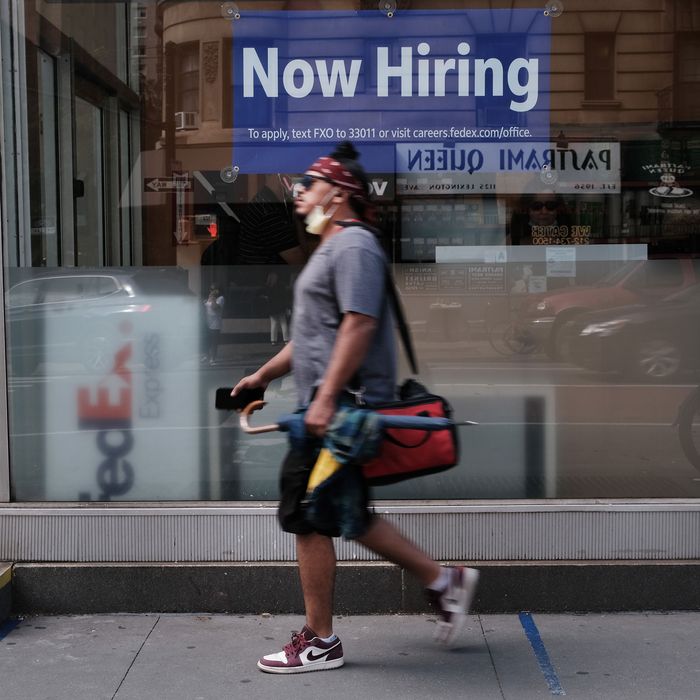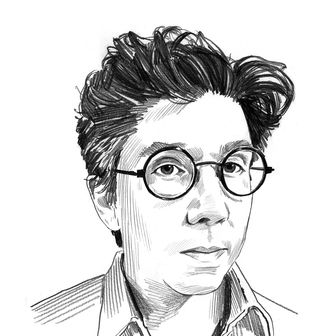
First, the good news about the economy: The unemployment rate found a new pandemic-era low of 3.9 percent in December, according to the jobs report released Friday. The new data came with some pretty big caveats, though — only 199,000 people joined the workforce last month, while Goldman Sachs analysts had expected more than double that for new jobs, and the number of people who aren’t working at all because of the pandemic didn’t budge. And while wages are going up, they’re not rising as quickly as prices for rent, gas, and the other goods that are fueling inflation.
The unemployment rate is a rosy data point that seems to be detached from a broader disaffection in the economy, but it’s still a crucial one in understanding what’s going on right now. The majority of Americans blame President Biden for his handling of the economy, according to a recent poll, and consumer sentiment is at its lowest point in a decade. It’s not really a surprise that there would be so much malaise — inflation is high, the pandemic is nearing its second anniversary — but what’s surprising is that Biden is now the third straight U.S. president to learn the hard way that low unemployment doesn’t mean that people feel that they’re any better off.
It used to be that when the economy was humming and jobs were plentiful, it was a pretty reliable indicator that people were happy with who was nominally leading the country. Thirty years ago, James Carville’s quip that “it’s the economy, stupid,” helped Bill Clinton crystalize his successful bid for the White House, ultimately taking it over from incumbent George H. W. Bush, who saw the unemployment rate rise to 7.8 percent. Before that, Ronald Reagan got voters to ask themselves “are you better off than you were four years ago? Is it easier for you to buy things in the store than it was four years ago?” Jimmy Carter oversaw the painful stagflation of the late 1970s and they answered no.
What’s changed since then, especially after the 2008 financial crisis, economists tell me, is even though the number of jobs may be outstanding, the quality of those jobs have been eroding. This has been the case since Barack Obama’s second term, when the unemployment rate fell to a low of 4.7 percent, but the weakness of the jobs market left an opening for Donald Trump to win support on his anti-free trade platform, betting on disaffected Midwesterners who’d seen their manufacturing jobs outsourced to countries with lower wages such as Mexico and China. When Trump became president, unemployment continued to slide to 3.5 percent, a 50-year low, even though he did very little to actually bring any of those manufacturing jobs back to the U.S. And these unemployment rates are all based on a shrinking workforce, largely because of the number of Boomers aging out of their jobs, though that’s accelerated during the pandemic as people stayed home to do childcare or protect their health. When you factor in those people, and those who’d like to work even more than they are now, it makes for a wide cross-section of discontent.
While politics plays a significant role in how people see the economy — essentially flipping people’s views of how things are going depending on who’s in the Oval Office — the broader picture is a bleaker one. Work, in general, has just been getting harder and paying off less. “The scales really have been tipped towards employers in general,” said Elise Gould, a labor economist at the Economic Policy Institute. “Workers feel disenfranchised. Even higher-wage workers feel like they can’t quit their jobs to take another one because they are bound by non-compete agreements or other factors that have not allowed them to have the freedom to go and get another job in their field.” Another way to look at it is through labor productivity, essentially a measure of a worker’s output, which has been steadily rising since the 1950s, while real wages didn’t really go anywhere for decades until recently. So when the pandemic hit, lingering problems of job insecurity, low wages, and paltry benefits only became more evident. “People don’t look at the unemployment rate and decide how they feel about jobs. They look at their paycheck. They look at the career path that they have, if they have one,” said Claudia Sahm, a former staff economist and section chief at the Federal Reserve. “They look at the benefits, if they have them.”
At the end of December, Biden touted his record on jobs: “When I came into office, our economy was in crisis. But over the last 11 months, we’ve added nearly 6 million jobs. That’s the largest increase in recorded history.” But in the coming months, it won’t be the White House that sets the agenda on hiring, but the Federal Reserve. The central bank, which has a dual mandate of keeping employment high and inflation low, is likely to escalate its war on rising prices some time next year by raising interest rates and making it more expensive to borrow money. Even though it’s evident that there are much more people who want to work than actually can, the swift decrease in the unemployment rate brings the U.S. closer to full employment. So when rates rise, Sahm says, that would double as a way of saying that hiring needs to slow down to keep the economy from overheating. “The Fed has the biggest bully pulpit on the economy,” Sahm said. “When the Fed says the labor market is as good as it gets, that is a signal to every policymaker, every business person.”






























